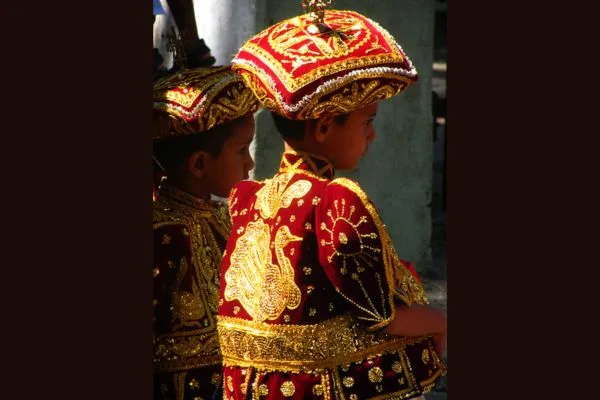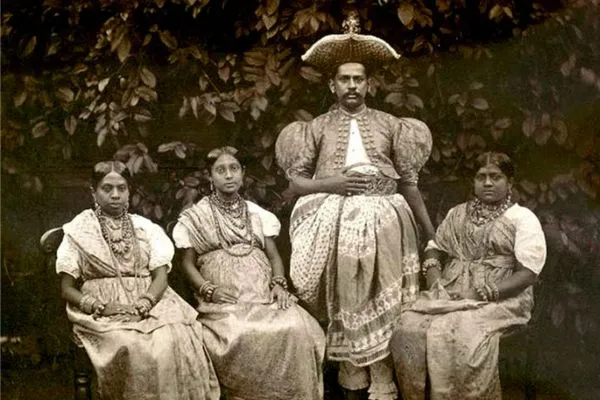Step inside the wild world of ancient Persia, where clothing was more than simply a piece of fabric; it was a story braided with sections of identity, culture, and luxury. Every item of clothing in Persian fashion tells a tale of a vivid, old civilization, making for a stunning trip through time.

For example, clothing formation during the Achaemenid, Parthian, and Sassanian eras revealed the impact of local traditions and foreign cultures on ancient Persian clothes. Here, we explore the historical realm of exquisite apparel designed for Persian aristocracy and daily life.
An Overview of Ancient Persian Clothing
The essence of Persian identity, tradition, and spirit is embodied in ancient Persian clothing. The intricate patterns depict the glitz and glamour of royal palaces, the bustle of lively markets, and the tranquil splendor of Persia’s famous gardens.
Every brilliant color and painstakingly embroidered thread demonstrates the skill and dedication of Persian craftspeople, whose love for their work has endured for generations, leaving a heritage of perfection and beauty.

Ancient Persian clothes varied from different perspectives like different classes, regions, and cultural influences. The implication of clothing extended beyond artistic. It was an indicator of identity, status, and cultural heritage.
Climate and Geographical Effects
The development of Persian clothing began with the region’s primary climatic and geographical characteristics. From heating deserts to snow-capped mountain tops, Persian nature demanded protection from harsh sunlight, cold winters, and sandstorms. As a result, Persian clothing had to be practical, comfortable, and made from light materials in the summer and layers in winter. Ancient Persian clothes blended comfort and cultural modesty in the designs of their shawl, robe, and tunic, which allowed for easy and flexible movement with little hindrance to vision.
Materials
Ancient Persian clothes were made from a variety of materials, reflecting social status and eminence, cultural elegance, the climate of different regions, and different seasons. The most cherished fabric was silk which was mostly imported from China, acclaimed for its softness and natural luster.

In everyday garments, wool was commonly used for its durability and warmth. In warmer regions, linen made from flax was also used in clothing for its breathability and comfort. In ceremonial places, materials such as velvet and brocade were preferred enhancing the elegance of clothing. Animal leather, especially those from sheep and goats, was utilized for clothing and shoes, highlighting their versatility.
Garments and Accessories
In ancient Persia attire often carried one’s status, wealth, and power. Fabric, colors, and patterns stand for position, status, and region. Persian garments were influenced by neighboring cultures, mostly Central Asia, Greece, Egypt, India, etc. Tunics were a base garment for both men and women, usually belted at the waist. Cloaks were worn for warmth and protection and draping was often used.
Ancient Persian Clothes: Women’s Attire
Women usually wore long-flowing tunics called “kandya”, usually belted at the waist. A longer outer garment was worn above it. Silk or wool were used and it could be heavily embroidered.

Most women in ancient Persia had their heads covered with A veil or other forms of head attire. And it would vary in style and materials which are symbols of their marital or social status.
Necklaces, bracelets, and earrings were part of jewelry, usually in gold or luxurious stones that adorned them.
Ancient Persian Clothes: Men’s Attire
Men usually wore loose, long tunics belted around the waist, along with trousers called “Sharwar”. Loose enough to ensure free movements.
On formal occasions, men wore cloaks or capes, and sometimes those were embroidered with sophisticated designs.

There were various types of head attires worn by ancient Persian men, including the “Kuba” which indicated the status and the regional tradition.
Clothing Differences by Social Class and Social Status
Ordinary People’s Clothes was marked by simplicity and practicality. In general, wool and linen were used as commoners’ fabric or materials. These were cheaper and more accessible compared to silk or brocade. Tunics were worn by both men and women which were usually knee-length or longer.
They were usually belted around the waist. Loose-fitting pants were common for men because they were comfortable for working or going out. Ordinary women generally wore for their regular outfits, longer dresses or skirts combined with a tunic or a shawl for extra warmth.

In commoner’s clothing fabrics were generally dyed in natural colors. Fewer patterns or designs were used compared to noble people. Both common men and women wore simple headgear or headscarves for protection from the sun at times.
While regular people’s clothing was composed of wool and linen, the privileged people’s clothing of ancient Persia was decorated with rich fabrics like silk, brocade, and velvet to show a person’s power and worth. Gentlemen wore cloaks over their shoulders, while noblemen wore flowing tunics, known as “kandys,” over pants.

Noble women wore shawls and long gowns. Their vibrant colors, which featured geometrical designs and floral motifs, were achieved by using natural dyes on their clothing. The various headdresses, which include crowns and elegant hats, help to differentiate the elite and represent the rich social and cultural fabric of the Persian Empire during the Achaemenid era.
Wrap Up
In ancient Persia, the garment was more than just an option to dress up; it was a cultural souvenir that reflected the country’s social structure and artistic sophistication. Using beautiful patterns, premium textiles, and expensive jewels, ancient Persian garments honored the richness and cultural legacy of their empire. Persian style, which was inspired by emperors and still influences modern fashion today, blends elegance and functionality.

